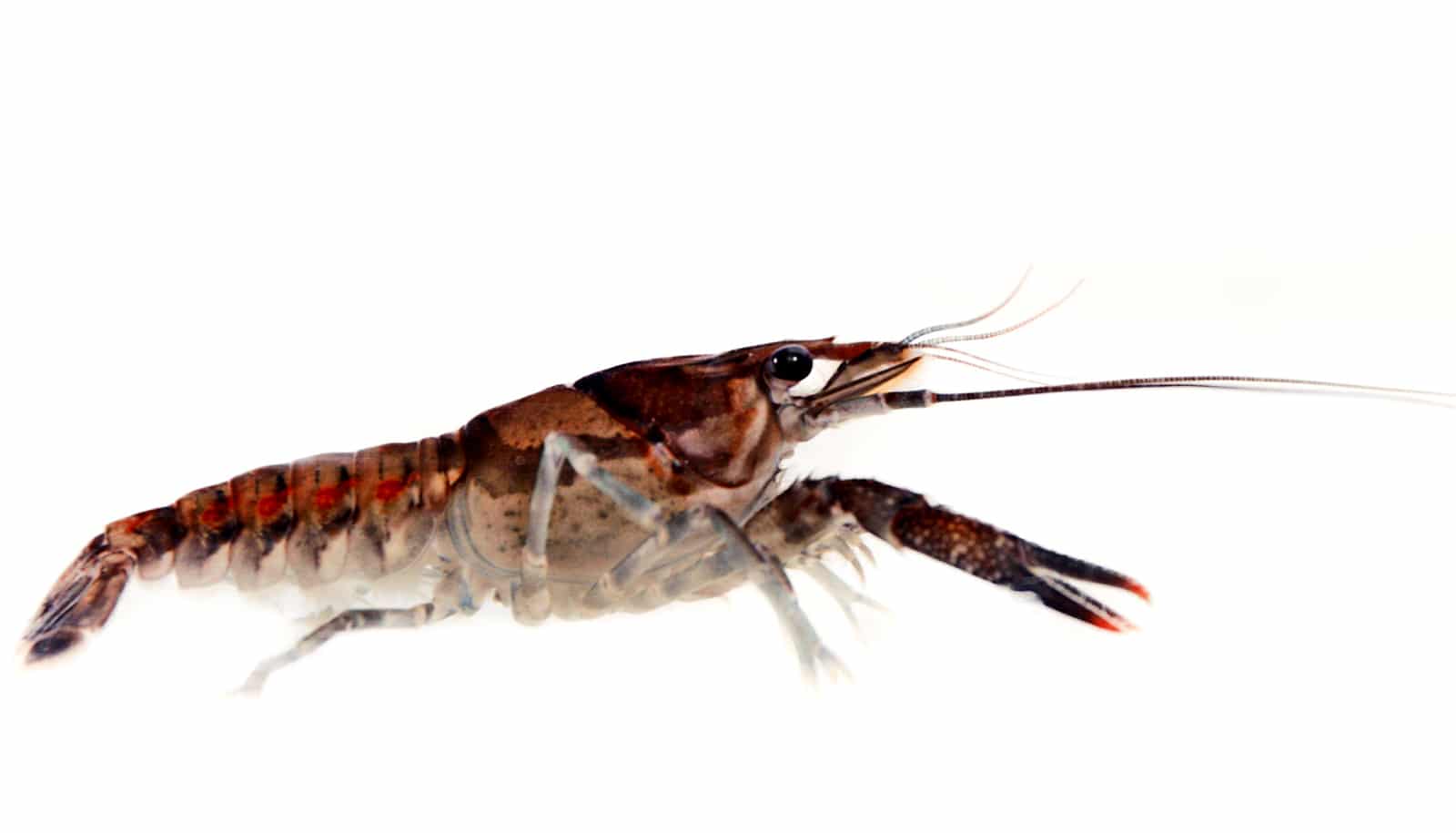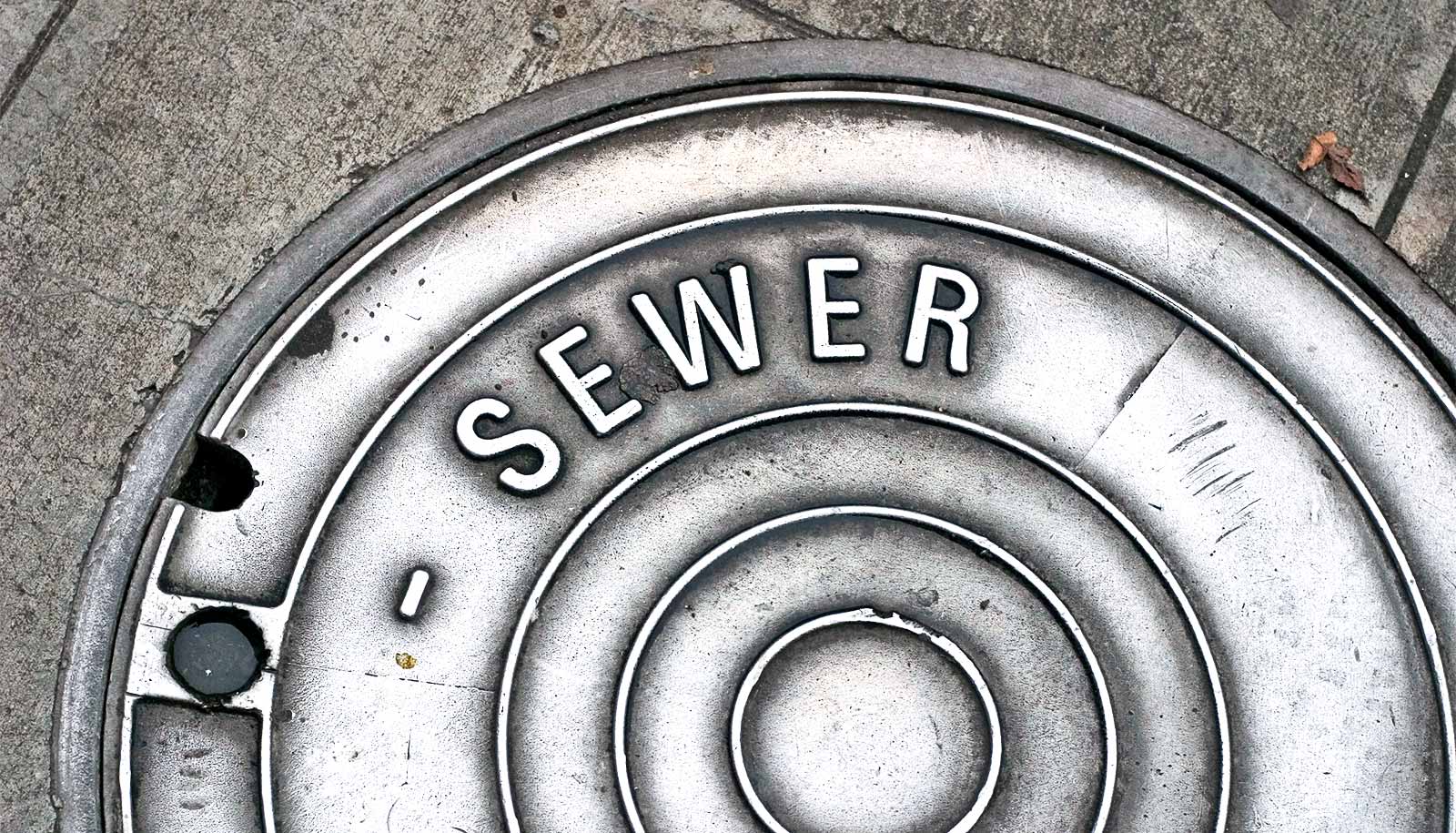Exposure to antidepressants in the water can make crayfish more outgoing, but that’s not such a good thing for the freshwater crustaceans, a new study finds.
“Low levels of antidepressants are found in many water bodies,” says A.J. Reisinger, lead author of the study and an assistant professor in the University of Florida/Institute of Food and Agricultural Sciences soil and water sciences department. “Because they live in the water, animals like crayfish are regularly exposed to trace amounts of these drugs. We wanted to know how that might be affecting them,” he says.
Antidepressants can get into the environment through improper disposal of medications, Reisinger says. In addition, people taking antidepressants excrete trace amounts when they use the bathroom, and those traces can get into the environment through reclaimed water or leaky septic systems.
The researchers found that crayfish exposed to low levels of antidepressant medication behaved more “boldly,” emerging from hiding more quickly and spending more time searching for food.
“Crayfish exposed to the antidepressant came out into the open, emerging from their shelter, more quickly than crayfish not exposed to the antidepressant. This change in behavior could put them at greater risk of being eaten by a predator,” says Lindsey Reisinger, a coauthor of the study and an assistant professor in the UF/IFAS fisheries and aquatic sciences program.
“Crayfish eat algae, dead plants, and really anything else at the bottom of streams and ponds. They play an important role in these aquatic environments. If they are getting eaten more often, that can have a ripple effect in those ecosystems,” Lindsey Reisinger adds.
Antidepressants in artificial streams
In their study, which took place while A.J. Reisinger was a postdoctoral researcher at the Cary Institute of Ecosystem Studies, the scientists wanted to understand how crayfish respond to low levels of antidepressants in aquatic environments.
“Our study is the first to look at how crayfish respond when exposed to antidepressants at levels typically found in the streams and ponds where they live,” A.J. Reisinger says.
The researchers achieved this by recreating crayfish’s natural environment in the lab, where they could control the amount of antidepressant in the water and easily observe crayfish behavior.
Crayfish were placed in artificial streams that simulated their natural environment. Some crayfish were exposed to environmentally realistic levels of antidepressant in the water for a few weeks, while a control group was not exposed. The researchers used a common type of antidepressant called a selective serotonin reuptake inhibitor, or SSRI.
Crayfish in the Y-maze
To test how antidepressant exposure changed crayfish behavior, researchers used something called a Y-maze. This maze has a short entrance that branches into two lanes, like the letter Y.
At the start of the experiment, the researchers placed each crayfish in a container that acted as a shelter, and that shelter was placed at the entrance to the maze.
When researchers opened the shelter, they timed how long it took for the crayfish to emerge. If the crayfish emerged, they had the choice of the two lanes in the Y-maze. One lane emitted chemical cues for food, while the other emitted cues that signaled the presence of another crayfish. The researchers recorded which direction the crayfish chose and how long they spent out of the shelter.
Compared to the control group, crayfish exposed to antidepressants emerged from their shelters earlier and spent more time in pursuit of food. They tended to avoid the crayfish side of the maze, a sign that the levels of antidepressants used in study didn’t increase their aggression.
“The study also found that crayfish altered levels of algae and organic matter within the artificial streams, with potential effects on energy and nutrient cycling in those ecosystems,” A.J. Reisinger says. “It is likely that the altered crayfish behavior would lead to further impacts on stream ecosystem functions over a longer time period as crayfish continue to behave differently due to the SSRIs. This is something we’d like to explore in future studies.”
How to dispose of your medications
Wondering how you can reduce the levels of antidepressants and other pharmaceuticals in water bodies? There are steps people can take, A.J. Reisinger says.
“The answer is not for people to stop using medications prescribed by their doctor. One big way consumers can prevent pharmaceuticals from entering our water bodies is to dispose of medications properly,” he says. This guide and infographic offer more information about how to dispose of unwanted medications while keeping them out of bodies of water.
The study appears in the journal Ecosphere. Additional coauthors are from Monash University and the Cary Institute of Ecosystem Studies.
Source: University of Florida


